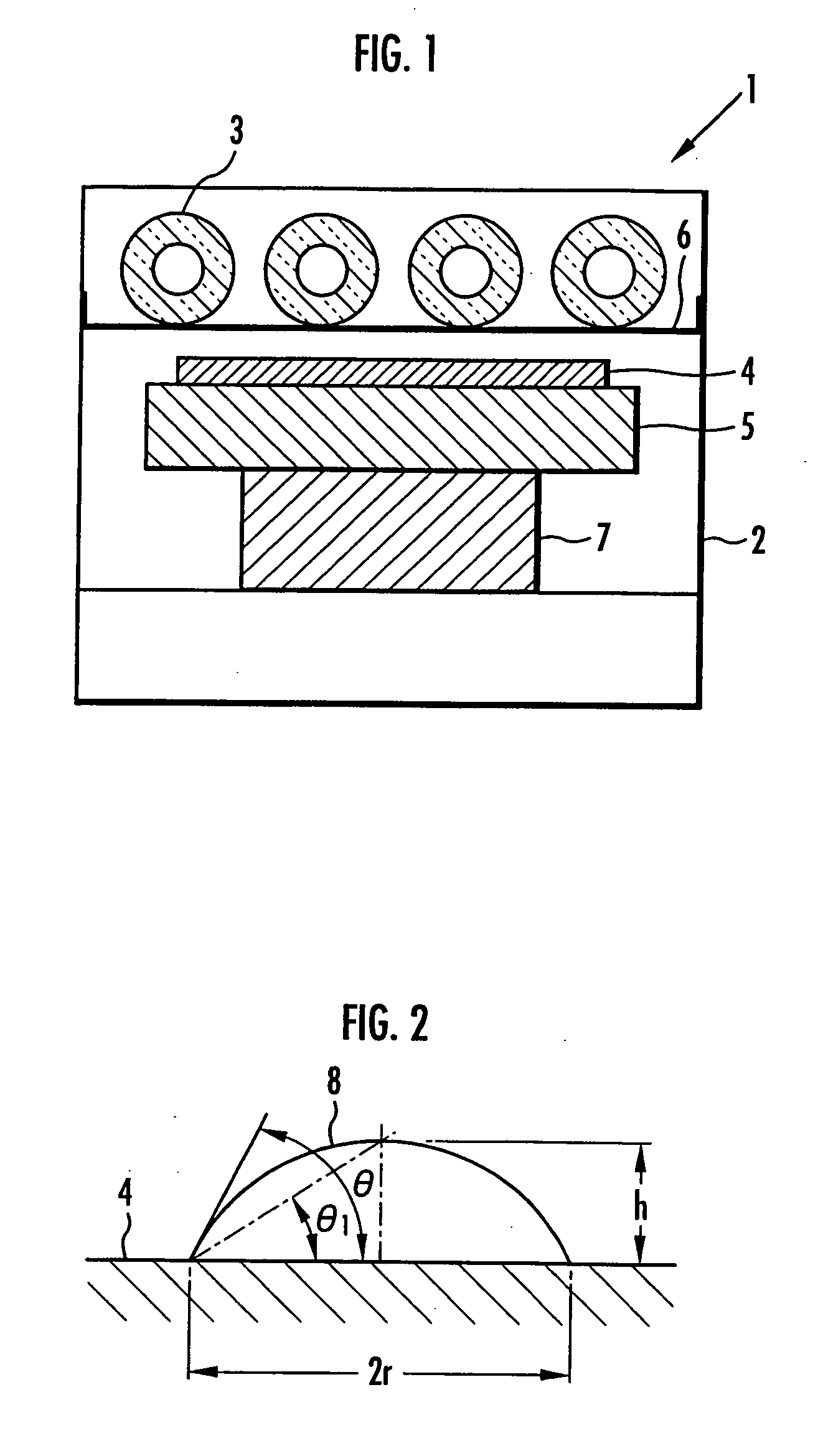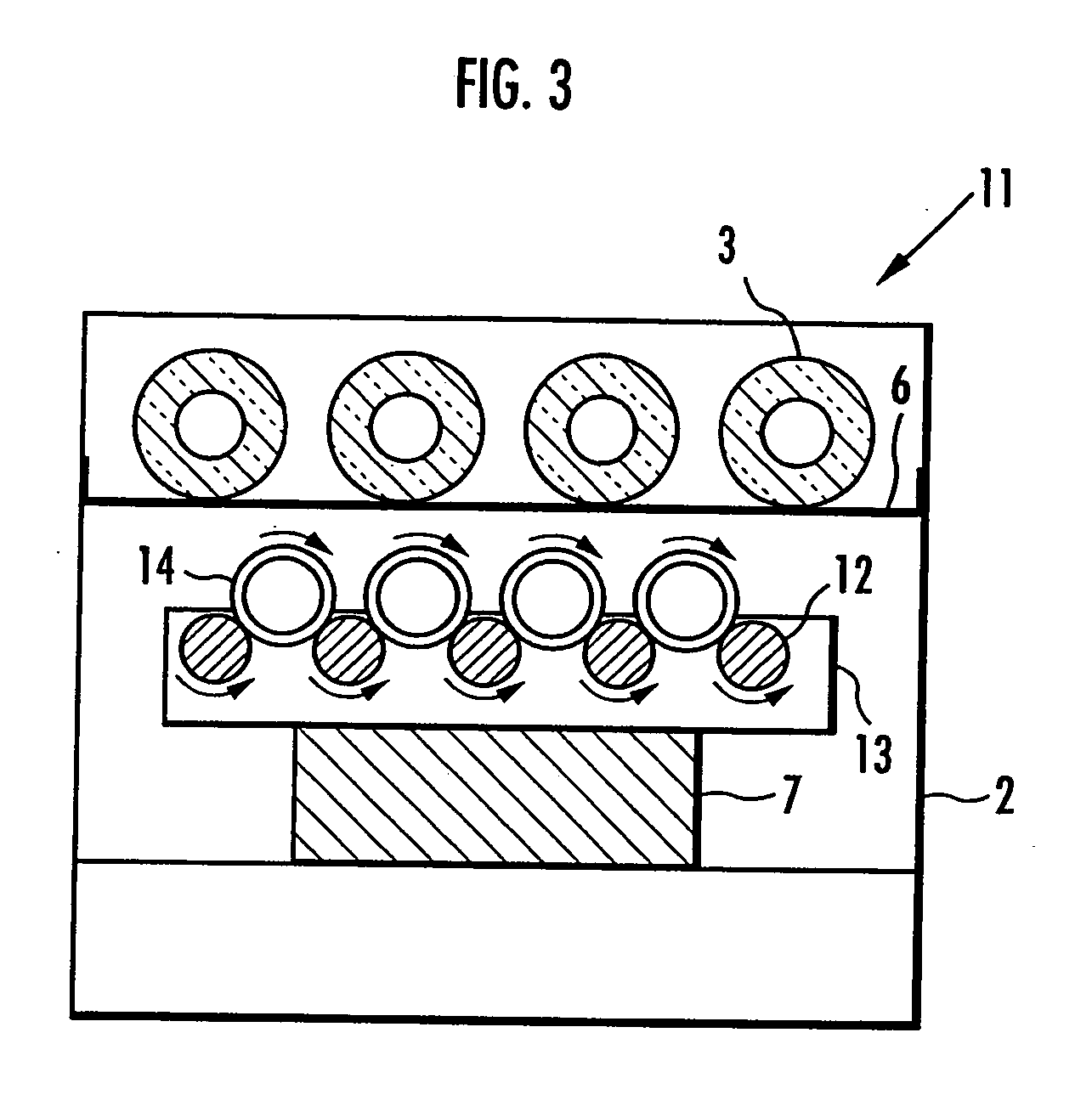Method of manufacturing hydrophilic carbon nanotubes
a technology of hydrophilic carbon nanotubes and carbon nanotubes, which is applied in the direction of energy-based chemical/physical/physical-chemical processes, metal/metal-oxide/metal-hydroxide catalysts, and metal/metal-oxide catalysts. it can solve the problems of poor wetting ability toward water and various organic solvents, difficult to disperse in water or various organic solvents, and low chemical activity. it achieves large strain energy, easy to open, and large hydrophili
- Summary
- Abstract
- Description
- Claims
- Application Information
AI Technical Summary
Benefits of technology
Problems solved by technology
Method used
Image
Examples
example 1
[0031] In the present example, carbon nanotubes were produced by a chemical vapor deposition method (CVD method). In the chemical vapor deposition method, an Fe catalyst having a particle size of 30 nm supported on an Al2O3 support was first attached onto quartz wool placed in a reactor tube made of quartz glass and the whole was heated to 750° C. under an argon atmosphere. Then, a mixed gas of argon / hydrogen was passed through the reactor tube at a space velocity of 10 cm / second and also hexane as a carbon source was introduced into the reactor tube at a rate of 6 ml / minutes in a state dispersed in the mixed gas of argon / hydrogen. Thus, the hexane introduced into the reactor tube was reacted at 750° C. for 2 hours in the presence of the Fe catalyst. As a result, multilayered carbon nanotubes having a purity of 80% were obtained in the present Example.
[0032] Next, the multilayered carbon nanotubes having a purity of 80% were subjected to hot oxidation treatment at 500° C. for 20 mi...
example 2
[0040] In the present Example, hydrophilic carbon nanotubes were produced in exactly the same manner as in Example 1 except that the time for the irradiation with the ultraviolet ray was changed to 60 seconds.
[0041] On the hydrophilic carbon nanotubes thus obtained, a contact angle θ was measured in exactly the same manner as in Example 1. In the present Example, the distilled water dropped on the surface of the disk of the hydrophilic carbon nanotubes soaked into the above disk within 1 second and thus the contact angle θ was 0°. The results are shown in Table 1.
example 3
[0042] In the present Example, hydrophilic carbon nanotubes were produced in exactly the same manner as in Example 1 except that the atmosphere in chamber 2 was made a nitrogen atmosphere and the time for the irradiation with the ultraviolet ray was changed to 60 seconds.
[0043] On the hydrophilic carbon nanotubes thus obtained, a contact angle θ was measured in exactly the same manner as in Example 1, whereby the contact angle θ was found to be 110°. The results are shown in Table 1.
PUM
| Property | Measurement | Unit |
|---|---|---|
| contact angle | aaaaa | aaaaa |
| contact angle | aaaaa | aaaaa |
| contact angle | aaaaa | aaaaa |
Abstract
Description
Claims
Application Information
 Login to View More
Login to View More - R&D
- Intellectual Property
- Life Sciences
- Materials
- Tech Scout
- Unparalleled Data Quality
- Higher Quality Content
- 60% Fewer Hallucinations
Browse by: Latest US Patents, China's latest patents, Technical Efficacy Thesaurus, Application Domain, Technology Topic, Popular Technical Reports.
© 2025 PatSnap. All rights reserved.Legal|Privacy policy|Modern Slavery Act Transparency Statement|Sitemap|About US| Contact US: help@patsnap.com


